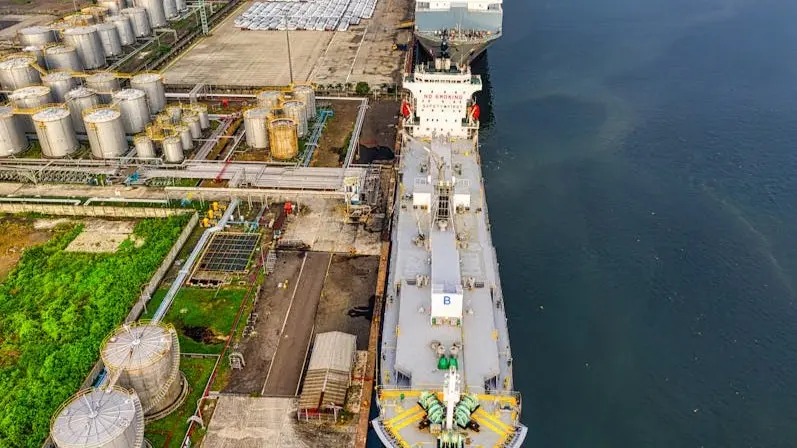Updated 16 April 2024 at 15:48 IST
Iran-Israel conflict threatens crude oil, LNG supplies via Strait of Hormuz
Should Iran proceed with threats to block the Strait of Hormuz, major disruptions in commodity flows are expected.
- Republic Business
- 2 min read

Iran-Israel conflict: In the wake of escalating military tensions between Iran and Israel, markets are bracing for potential disruptions in commodity flows, particularly in oil and spot liquified natural gas (LNG) prices. The conflict, marked by drone and rocket attacks launched by Iran on Israel, has raised fears of a supply crunch, prompting investors to anticipate elevated prices in key commodities, brokerage firm Motilal Oswal said.
The Strait of Hormuz, a crucial waterway between Oman and Iran, remains a focal point in the crisis. Approximately 15 to 16 million barrels of crude oil and refined products transit through the Strait of Hormuz daily, accounting for 15 per cent and 8 per cent of global crude and refined product consumption, respectively. Moreover, nearly 20 per cent of global LNG trade passes through this strategic route, with Qatar and the UAE heavily reliant on it for LNG exports.
Should Iran proceed with threats to block the Strait of Hormuz, major disruptions in commodity flows are expected. Alternative routes exist, yet they can only accommodate a fraction of the current volume at higher freight costs, analysts at Motilal Oswal noted. Additionally, the absence of alternative routes for LNG exacerbates the potential impact on spot LNG prices, they added.
Key stakeholders in the energy sector are closely monitoring developments. Saudi Arabia and the UAE, major oil exporters, have alternative export routes bypassing the Strait of Hormuz. However, existing challenges, such as disruptions in the Red Sea, pose additional hurdles, Motilal Oswal added.
Advertisement
Iran's crude oil exports, currently at 1.5 million barrels per day (bpd), could face risks amid the escalating crisis. Market observers speculate on the potential response from OPEC+ to counterbalance any supply shocks. While OPEC+ has been reducing supply, market share losses and rising production from non-OPEC countries may compel the alliance to reconsider production curbs.
Asian markets, particularly China, India, and Japan, are heavily dependent on commodity flows via the Strait of Hormuz. Any disruptions could significantly impact these countries' energy security and economic stability, Motialal Oswal said.
Advertisement
Integrated oil marketing companies (OMCs) such as HPCL, BPCL, and IOCL may face margin pressures, while gas utilities like GAIL and city gas distribution (CGD) sectors could see challenges due to high spot LNG prices. However, companies like Reliance may benefit from elevated GRMs, Motilal Oswal noted.
Published By : Abhishek Vasudev
Published On: 16 April 2024 at 15:48 IST
